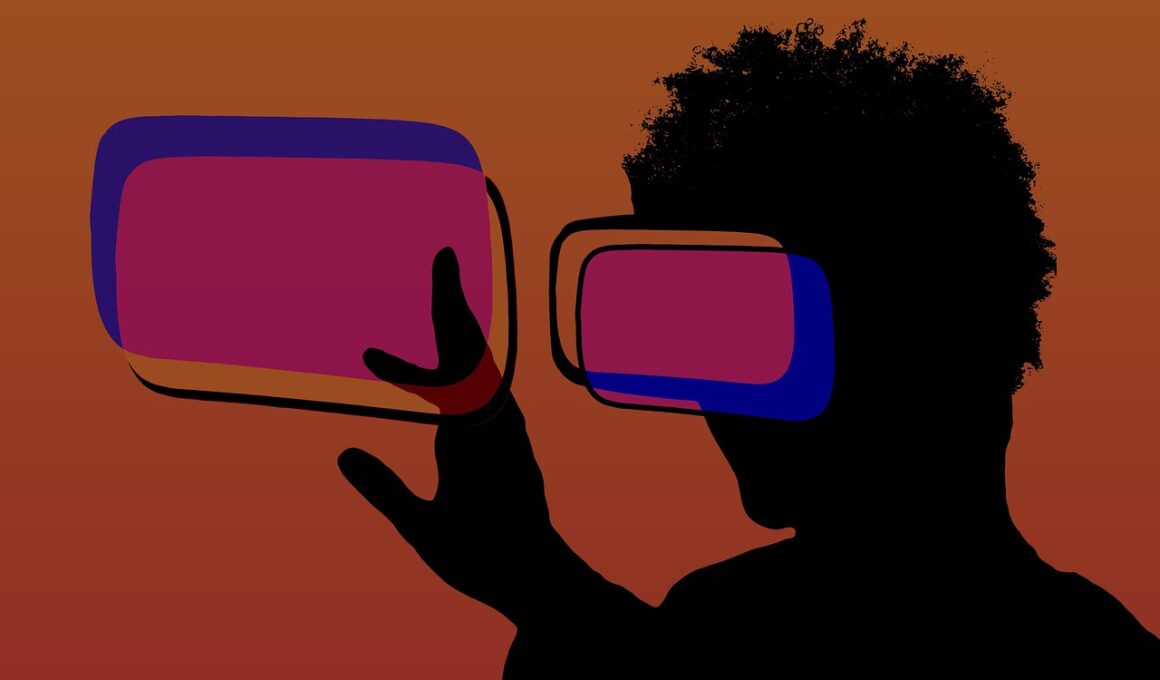The Impact of Virtual Reality on Social Media Events in 2024
In the rapidly evolving landscape of social media, virtual reality (VR) is poised to revolutionize how events are conducted in 2024. With the increasing accessibility of immersive technology, brands and organizations are beginning to leverage VR to engage audiences in ways previously unimagined. This trend offers unique opportunities for creating interactive experiences that captivate users and foster deeper connections. Unlike traditional formats, VR events provide attendees with a sense of presence and participation, making them feel as if they are physically part of the event. This not only enhances user engagement but also increases the likelihood of attendees sharing their experiences on social media platforms. Companies are recognizing the potential of VR to amplify their online presence and reach broader audiences beyond geographical limitations. However, it’s essential to overcome technological challenges, such as ensuring compatibility across devices. While some might view VR as a novelty, its integration into social media events can significantly change marketing approaches. The path forward involves creative strategies in combining traditional social media outreach with immersive VR experiences, ultimately reshaping the event landscape.
As social media event planners embrace virtual reality, it’s crucial to design engaging content tailored to the audience. Integrating gamification into VR events can transform passive observers into active participants, making the overall experience more memorable. Gamification techniques, such as challenges and rewards, not only motivate attendees to engage more but also prompt them to share their experiences online. Highlighting user-generated content from VR events can further amplify reach and create a sense of community among participants. For marketers, this provides an opportunity to create a buzz around the events, generating interest before and after the actual dates. Collaborations with influencers who specialize in technology and VR can also enhance credibility and attract larger audiences. By utilizing social media for live streaming VR events, organizations can draw in participants who may not be able to attend physically, ensuring inclusivity. As we move through 2024, brands must remain agile in their strategies, continuously evaluating the success of their VR initiatives. Understanding audience reactions and adapting content accordingly will play a pivotal role in the sustainability of this trend. Strong analytics tools will be essential for tracking engagement and refining future event plans.
Challenges of Implementing VR in Social Media
While the benefits of virtual reality in social media events are numerous, several challenges must be addressed to ensure success in 2024. One major concern is the cost associated with producing and distributing immersive VR content. High-quality video production, along with the necessary equipment for both attendees and hosts, can be a considerable investment. Moreover, not all users possess VR headsets, which raises concerns about accessibility. Therefore, companies must consider how to make these experiences inclusive to engage a broader audience. Additionally, technical difficulties and connectivity issues can create frustrating experiences for participants, potentially leading to negative feedback. As such, it becomes essential for brands to conduct thorough testing and ensure that they have adequate support systems in place. Another challenge involves crafting compelling narratives that suit the immersive nature of VR. Marketers need to rethink their conventional approaches and focus on storytelling that captivates users in a three-dimensional environment. Balancing engagement with technical precision will be necessary to harness the full potential of VR in social media events moving forward.
Audience engagement strategies become increasingly vital as virtual reality plays a significant role in social media events in 2024. Engaging users through interactive experiences will transform typical event formats. For example, utilizing VR breakout rooms can allow attendees to converse and collaborate in small groups, enriching networking opportunities. These environments create a space where participants can feel more connected to one another, enhancing the overall experience. Event organizers should offer enticing incentives, such as exclusive content or personalized avatars, to motivate attendees to engage with the event actively. Additionally, implementing feedback mechanisms during and after events will provide valuable insights into user preferences, allowing for continuous improvement. Combining VR technology with strategic social media campaigns can amplify the reach and impact of these events. Encouraging participants to share their experiences, using dedicated hashtags and real-time updates, can generate a buzz and draw attention from potential attendees. This social aspect not only amplifies the excitement surrounding the events but also creates an ongoing conversation. As audiences become more involved, they will feel compelled to participate in future events, fostering loyalty and enthusiasm.
The Future of Networking in VR
Networking, a quintessential aspect of events, is evolving with the advent of virtual reality. In 2024, attendees will expect deeper engagement and connection from social media events. By utilizing immersive technology, brands can encourage networking opportunities by simulating real-world scenarios, such as informal lounges or collaboration areas. VR can facilitate interactions between participants who might not otherwise connect, thus enhancing the overall experience. Using customizable avatars, attendees can represent themselves more authentically, infusing personality into their interactions. This technology allows participants to showcase unique aspects of their identity, making networking more genuine. Additionally, incorporating icebreaker activities in VR can aid in breaking down barriers. Guided introductions can facilitate conversations, paving the way for meaningful connections. Event planners will need to design these experiences carefully to maximize their effectiveness. The data gleaned from VR networking can be leveraged to create personalized future invitations. As networking becomes more integrated into VR social media events, brands must stay ahead of the curve by embracing these changes and adapting to user expectations for the best results. This adaptability will ultimately determine success in the evolving social landscape.
As organizations explore the impact of VR on social media activities, leveraging analytics will be crucial in 2024. Understanding user interactions and behaviors through analytics provides insight into the effectiveness of virtual events. Companies can utilize data to determine participant satisfaction levels and areas needing improvement. Key performance indicators (KPIs), such as engagement duration and content sharing rates, will offer valuable information for optimizing future events. Implementing post-event surveys can also gather direct feedback from attendees, allowing for a more comprehensive understanding of user preferences. This data-driven approach will support continuous innovation in VR event design, ensuring they remain relevant. Moreover, companies can analyze demographic data to tailor experiences to specific audience segments, driving engagement further. Utilizing advanced analytics tools will help in translating raw data into actionable insights, ultimately steering marketing strategies. As VR becomes an integral component of social media, brands must prioritize investment in analytics infrastructure, aligning it with their broader marketing objectives. This will ensure they are well-positioned for the rapidly evolving digital landscape in 2024, creating opportunities for more engaging social media experiences.
Conclusion: Embracing VR in Social Media Events
In conclusion, the integration of virtual reality into social media events in 2024 signifies a transformative shift for brands and attendees alike. By embracing the immersive potential of VR, organizations can create interactive experiences that captivate and engage users on a deeper level. As this technology evolves, so too will the strategies needed to effectively implement it. Companies must prioritize audience engagement, inclusivity, and data-driven decision-making as critical components of their event planning. However, they should also remain adaptable, ready to pivot as user preferences and technologies shift. The potential for growth remains vast, making it essential for brands to explore innovative ways to integrate VR into their marketing agendas. As social media continues to develop, the merging of these two fields will shape future trends, creating a landscape where virtual interactions become the norm. In doing so, organizations can foster stronger connections that transcend physical boundaries, enriching the overall experience for all participants. Moving forward, embracing VR could redefine the essence of social media events, paving the way for more impactful engagements.
Understanding the impact of these emerging trends will be critical for businesses looking to maintain a competitive edge. As VR technology becomes more mainstream, the possibilities for creating captivating social media events will expand. The role of virtual reality in shaping audience experiences is undeniable, and it’s clear that social media platforms are poised to adapt accordingly. As we approach 2024, it is exciting to anticipate how these technologies will converge to influence marketing and event strategies across industries.


